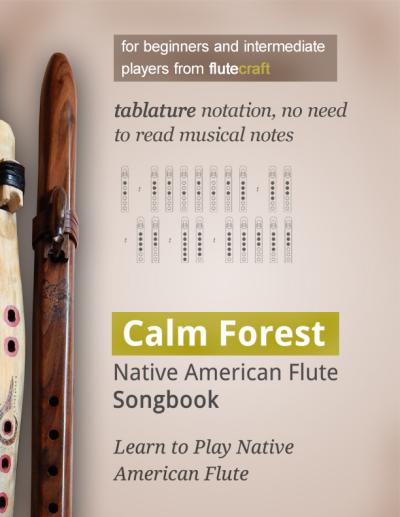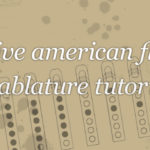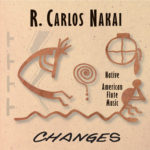Have you ever wondered how people create Native American flute music accompanied by various instruments? Playing with others is one thing, but a lot of people are solo artists, using the wonders of modern software technology to create various kinds of accompaniment for their music.
These days, you can create wonderful music by using nothing more than a computer with proper software. Imagine you could add wonderful, “new age” like pads to your flute music, or even better, play along with an entire symphonic orchestra without leaving your home. It’s possible! While it requires a lot of time and practice to learn how to create music on a computer, it’s possible, and in this article I will provide you with the basic knowledge and skills necessary to learn this craft.
First, how powerful is this “music made on computer”? What can you actually achieve? Well, check out my free orchestral album on Jamendo – I made it completely with virtual instruments. This is what’s possible :).
In this article I will explain you the basics – the amount of knowledge and skills is quite large, so I can’t explain everything in a single article. But since I got a separate website about this with a lot of tutorials, here I can simple give you an idea of how music production works these days.
We’re going to learn about DAW and samplers – types of software that allow you to use virtual instruments. Then I will show you how I made a short piece of music.
- The amount of knowledge necessary to create music on a computer is rather large. I teach most of the stuff on my other website, Orchestral Music School. There’s an entire music theory for computer musicians course there, too! I also explain various samplers and MIDI techniques, so go ahead and check it out.
There will be a short video at the end of this article in which I show everything I’m discussing in this article. I will also provide a couple of links that will help you start music production for free.
DAW, or Digital Audio Workstation
How do you make music on a computer? First, you need a computer :). I like to point this out in the age of smartphones :). You also need a special type of software, called DAW – a Digital Audio Workstation. It’s a piece of software that allows you to record and edit audio – this software is used for recording instruments, composing music, editing recorded podcasts, and working with sound design.
Personally, I use Reaper – a great DAW software that is not only very powerful, it’s also very affordable – while a lot of DAW programs can cost hundreds of dollars, basic Reaper license costs only 60 USD.

Reaper – a great DAW
The screenshot above shows an interface of Reaper – most DAW programs look very similar. There’s a playback control, a work area, a timeline, some settings for tempo and a key signature.
You can download free trial of Reaper and use it for 60 days. Download Reaper here.
A DAW allows you to record your Native American flute, and edit it with additional plugins and effects, such as equalizers (we use EQ to edit the frequency of our audio), or reverbs (an “echo” effect that provides the feeling of space). A DAW also allows you to use a MIDI editor to create entire music compositions – by adding notes, creating melodies and harmony with chords.
Working with MIDI Editor
MIDI editors allow you to add notes – thus you can use them to create melodies and harmonies (once you know music theory). Next, we can also use various controls such as velocity or modulation wheel to shape our music by changing the loudness and dynamics of sounds.
We do not add normal notes, like the ones you see on music sheets, but we use MIDI “bricks” and we place them on a grid.
By the way, there are also great programs for sheet music, such as MuseScore. If you prefer, you can compose your music in a more traditional way. Anyway, let’s take a look at midi editor.

A MIDI Editor in Reaper
MIDI editors always provide you with a grid workspace where you actually add notes, and a piano roll – a piano representation of all the notes in various octaves (registers).
The MIDI notes on their own produce no sound – they’re just “data”. To actually make music, you have to assign virtual instruments to these notes. What are virtual instruments?
Working with Virtual Instruments
Virtual instruments are like “libraries” of sounds that are controlled by a sampler – a program-in-a-program, loaded into your DAW. A mixture of audio files and programming code in the library actually makes the virtual instrument – quite realistic representation of a real instrument that you can use in your music. There are countless libraries available – from rock guitars to drums, from ethnic flutes to electronic pads, from choirs to entire orchestras. It’s a huge business, actually :). A lot of musicians these days use this kind of software technology to create music.
How much does it cost? Quite a lot, unfortunately. A good sampler like Kontakt 5 costs nearly 400 dollars. A basic orchestral library costs about 500 dollars. Individual instruments such as piano or guitar can cost anywhere from 50 do 300 dollars. It’s not a cheap hobby. But it all depends on what kind of music you wish to create. Creating orchestral music is much more expensive than just buying a piano instrument to create a simple accompaniment.
Free stuff:
The good news is that there’s also a free Kontakt Player – a smaller version of Kontakt sampler, that comes with some basic instruments – and you can use this for free! There’s also a great website, DSK Music, that provides some nice free instruments. This, along with 60-days free trial of Reaper allows you to actually try this new way of making music without spending a penny :).
An Example of Flute with Background Music
How do I make music on a computer? Beside an entire course on my Orchestral Music School, I’ve created a short video explaining the process, and here’s a couple of words about this video (posted below). First, I opened my Reaper DAW software.
First of all, I recorded a short piece on my Native American style flute in the key of F# (I used Golden Eagle by High Spirits). Because the flute is tuned to A=440, a concert pitch, and I knew its key, I knew I have to use an F# minor scale to compose my music. Once you know the scale, you know what notes you can actually use.

A short NAF recording.
Then, I’ve loaded a Kontakt sampler and I’ve loaded a String Ensemble patch. I’m using Cinematic Strings 2 – a very nice library for an entire string section. I actually compose orchestral music, so I have an entire orchestra as virtual instruments on my computer. I’ve set an articulation to arco (long sustained notes).

Cinematic Strings 2 in Kontakt 5
Once I was done with settings, I used my knowledge of music theory and composition to create a simple chord progression, using only two notes from each chord (my music theory course explains what chords are).

Simple chords played on a String Ensemble
The long green things are notes as shown in a midi editor. Since the flute is in the key of F#, I’m using the notes from the F# minor scale – while the flute itself plays a minor pentatonic, I can use a couple of other notes from a natural minor scale as well. This is why I use F#, A, B, C# notes, and even a G# note as well. I used the modulation wheel CC to create some dynamics for the strings – this way their sound rises and falls in regular intervals to increase the realism of my virtual instrument.
Next, I’ve created a second MIDI track to create some notes on piano, and then a third track to add an additional electronic pads. The entire piece looked like this:

My Native American Flute Composition
Because I made a mistake while recording the flute, I had to automate the volume to create a fade out – on the image you can see this as this “dropdown” at the end of the green field below the recording.
Finally, because the flute was recorded “dry”, I had to add some reverb to it. Dry is a term in music production that means the recording has no effects added to it – the sound itself is dry. I had to add a reverb to get a sense of space for my flute.

Reverb effect for my NAF
That’s it – I composed a piece. It’s a short and simple composition – actual music production requires a lot more work, and a lot of tweaking to get the sound perfect.
If you haven’t already done so (well, you may have came here from YouTube, not the other way around), be sure to check the video below to see how everything works.
Questions & Answers
Do I need expensive hardware?
You do need a hardware – fortunately, most modern computers are powerful enough to run both a DAW and samplers with virtual instruments. You also need a microphone of better quality to record your flute music, and some acoustic room treatment to improve the quality of these recordings. You don’t have to spend too much for a start – at first 100-200 dollars should be enough for a microphone and a room treatment.
What do I need to learn to produce my own flute music?
You need to know music theory, music composition and music harmony. You also need to know how to use a DAW and how to work with virtual instruments. You also need to know how to mix your own music. All this knowledge can be found on the Internet. There are free tutorials, books and paid courses.
What other type of software, hardware do I need?
Not much for a start – most DAW comes with a set of “stock plugins” such as equalizers, compressors or reverbs, so you can learn how to use these plugins and there’s no need to buy any effect or tool separately.
If you’re a piano player, you may want to purchase a MIDI keyboard to actually play on your computer, but that’s not necessary. Once you get better with mixing, you may also want to purchase studio speakers or studio headphones that have a better quality of sound that improves your mixing.
Can I do this at home?
Yes – a lot of musicians these days create small home studios where they can work on their music. With some acoustic room treatment, some hardware and some software, you don’t need to rent a professional studio. You can do things yourself.
Summary
Hopefully with this article and a video I made, you’ll get a better understanding of how you can produce music on a computer. Once you learn the basics and get some instruments for a start, with time and experience you’ll be able to create some wonderful music!
My other website, Orchestral Music School, contains a lot of articles and tutorials that teach you music theory and music production using samplers and virtual instruments – despite the name of the website, the skills you’ll learn there will actually allow you to create music using various virtual instruments – new age pads, drums, or ethnic instruments. So if you want to learn how to add accompaniment to your Native American style flute music, Orchestral Music School is a place to start.
Don't forget to become a fan on Facebook and subscribe to new posts via RSS or via email.









 via EMAIL
via EMAIL